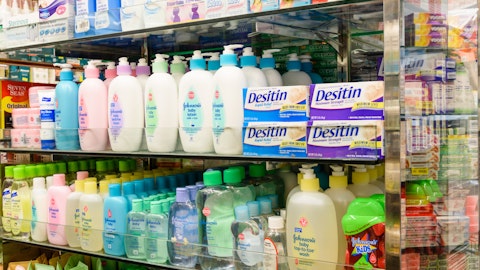Polish biotech company Mabion SA (WSE:MAB) just announced the signing of a supply and commercialization agreement with Mylan NV (NASDAQ:MYL), by way of its subsidiary Mylan Ireland, which will see the latter pick up exclusive rights to the former’s biosimilar of Mabthera/Rituximab (Mabion CD20) in all EU countries and non-EU Balkan states.
If you are following EGLT or COLL then you must read our research now! Click here for the full report!
The agreement paves the way for the two companies to commercialize a drug that generated more than $7 billion in global sales for its branded marketer Roche Holding Ltd. (ADR) (OTCMKTS:RHHBY) back in 2013.
Here’s what we know, and what the collaboration might mean for all the parties involved going forward.
First, a bit of history.

ZIDO SUN/Shutterstock.com
The drug in question, Rituximab, first picked up approval from the US Food and Drug Administration (FDA) for treating non-Hodgkin’s lymphoma in 1997, which was followed by European Union (EU) approval in June 1998. It went on to become one of the top, if not the top, selling cancer drugs across the subsequent decade and a half, spearheading Roche’s oncology portfolio and cementing a spot on the World Health Organization’s (WHO) list of essential medicines – a spot it still holds, and that we will return to shortly.
At the end of 2013, however, the drug came out from under patent protection. With a large potential revenue pot for a company that could develop and commercialize a generic version, a number of companies got to work developing an alternative. One of these was Mabion SA (WSE:MAB). Others included Boehringer Ingelheim, Teva Pharmaceutical Industries Ltd (ADR) (NYSE:TEVA) and SAMSUNG ELECTRONIC KRW5000 (OTCMKTS:SSNLF). Each of these latter three mentioned companies have since dropped their development programs, for various reasons, leaving Mabion an opportunity to get in ahead of the wave of big names and bring its product to market in Europe.
Looking at the drug specifically, its an oncology focus in this instance (although there are other applications), as mentioned, and its an IV administration antibody that targets a protein called CD20. This protein primarily resides on the surface of B cells, which are a component of our immune system, and can cause a range of problems if they become overactive or dysfunctional. Rituximab targets the protein, and on identification, induces apoptosis (just another word for a sort of programmed cell death) in the cells that express it – in this instance, the problematic B cells.
It’s important to note here that the fact that this is a biologic plays a big part in the ease with which a company can bring a generic version (for accuracy’s sake, we’re going to refer to this as a biosimilar version from here on out) to market.
Follow Mylan Ii B.v. (NASDAQ:MYL)
Follow Mylan Ii B.v. (NASDAQ:MYL)
Receive real-time insider trading and news alerts
A standard chemical based drug is relatively small and non-complex. When a company wants to bring out a generic, it can copy the chemical makeup of its target drug exactly, prove it works in a similar fashion by way of some simple studies, and submit for approval.
Biologics, on the other hand, of which Rituximab is one, are far more complex. They are derived from living organisms, and much larger in construct than chemical drugs. This makes them incredibly difficult to copy exactly, and that’s the root of the issue for the above mentioned big names that have been trying to bring a biosimilar Rituximab to market. They are tough to get right.
Mabion, to date, has developed and tested its biosimilar not just in a lymphoma indication, but also as part of a rheumatoid arthritis (RA) target, and said back in May that not only does its trials support the clinical equivalence of its candidate in both these indications, but it also demonstrates a superior safety profile. If this is the case, then it should have no problem getting through the EMA approval process.
Well, there was one problem.
When a company of Mabion’s size attempts to enter a market like this, even when some of the big names have dropped out, it’s going to need capital, or a deep pocketed partner, if it is to have any chance of commercial success. Novartis AG (ADR) (NYSE:NVS) is still very much in the race, as is South Korea’s CELLTRION INC KRW1000 (OTCMKTS:CONIF), the latter of which just teamed up with the above mentioned Teva on an distribution and commercialization partnership deal for its two lead biosimilar candidates, one of which is Truxima, its biosimilar Rituximab.
The partnership with Mylan NV (NASDAQ:MYL) solves this problem for Mabion SA (WSE:MAB).
The company is set to receive $10 million and additional payments for the implementation of the key steps of the deal in the total amount of up to $35 million, as well as royalties on sales. This upfront capital is nice, and it will no doubt ease shareholders’ dilution concerns, but the real win here for Mabion is that it puts the company firmly in the race to bring this drug to Europe.
So what’s next?
In a word, submission. Celltrion’s EMA submission is already with the agency, so the clock is ticking for Mabion if it wants to maintain a leadership position, but this move suggests that getting a marketing application with the EMA is just around the corner.
Note: This article is written by Mark Collins and was originally published at Market Exclusive.





